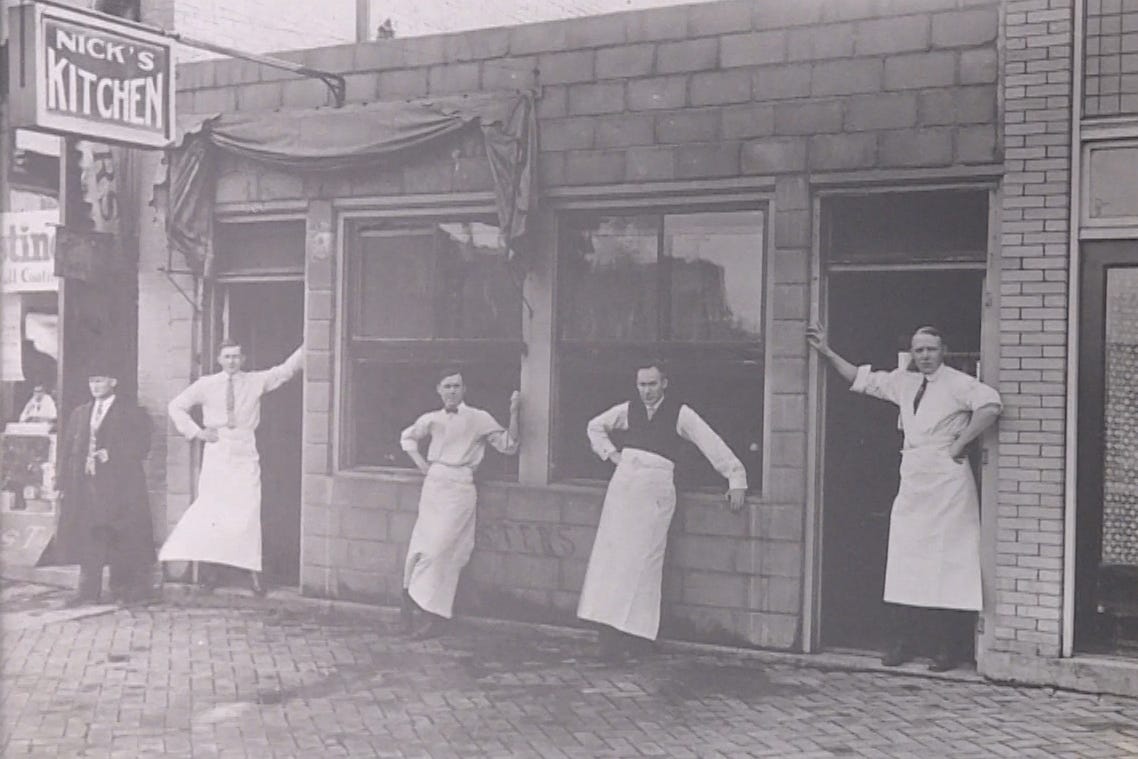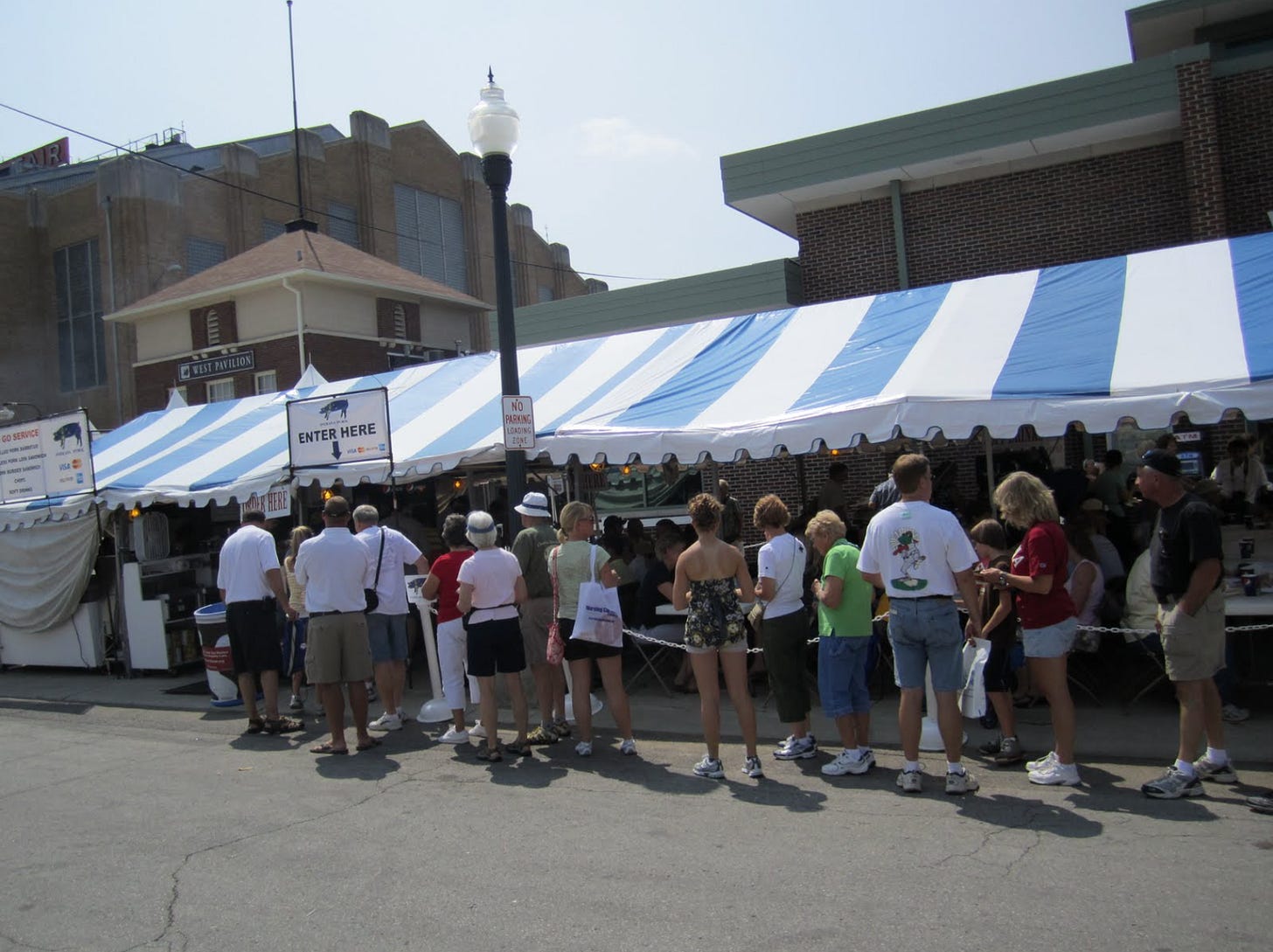A Hoosier Classic: The Pork Tenderloin Sandwich
A little history on Indiana's Unofficial State Dish
Recently, I began reading National Dish: Around the World in Search of Food, History, and the Meaning of Home by Anya von Bremzen, in which she unravels the history and folklore of infamous dishes from each country. France’s national dish is pot-au-feu, which translates to “pot on the fire.” A pot-au-feu contains meat, root vegetables, herbs, and spices. I haven’t tried pot-au-feu, but I typically don’t enjoy hearty stews. If I had to guess French’s national dish, I would be stumped. However, I could tell you different French regional cuisines and dishes. The same could be said about my ability on American cuisine. I couldn’t pinpoint a national dish for the United States (maybe a hamburger?), but I can identify dishes related to certain cities and states.
In Indiana, the state’s specialty is the breaded pork tenderloin sandwich (BPT). In my opinion, the perfect BPT is a pork tenderloin that is about a quarter inch thick with a thin coating of breadcrumbs; it is the size of a small dinner plate sandwiched comically between toasted buns. If the BPT isn’t hanging off the bun by at least an inch, you are not only being robbed of an experience but, also, not getting the best bang for your buck. As a kid, I only added ketchup (an untraditional topping choice, but my favorite condiment) to my BPT. It’s more common to have a combination of crunchy pickles, white onion, mustard, lettuce, and tomato to accompany the sandwich. There are many strategies to devouring a BPT. My preferred method is by eating the edges of the pork tenderloin until I make it to the bun and then eating the sandwich as normal.
I don’t have a strong opinion on where to eat the best BPT, but I can tell you Just Judy’s off 62nd Street and Bindford Road in Indianapolis is the worst.
How did the BPT become a Hoosier food staple?
It is said that the birthplace of the BPT was at Nick’s Kitchen in Huntington, Indiana (about a two-hour drive northeast of Indianapolis). The mastermind behind the BPT is Nick Freienstein (1876–1941), a son of German immigrants. Due to Freienstein’s successful food chart selling hamburgers, he was able to open Nick’s Kitchen in 1908. Along with hamburgers, Freienstein sold another popular sandwich, which would become known as the BPT.
Freienstein created a new recipe similar to the wienerschnitzel. Wienerschnitzel is a Viennese-style preparation of veal. It is pounded very thin, breaded, and pan fried. The pork tenderloin is prepared much the same way as a wienerschnitzel: pounded very thin, breaded, but deep fried instead. Freienstein decided that his version of a wienerschnitzel would be eaten similar to a hamburger: sandwiched between bread and eaten with your hands, not with a fork and knife.

Freienstein most likely switched out veal for pork, because pork was more accessible. There isn’t much veal in Indiana, and, to be honest, I don’t know a Hoosier who eats it. I’ve only had veal once and it was when I lived in France. However, there has always been a lot of pork in Indiana. Pork is an important industry in the Midwest, and Indiana ranks fifth in the United States for pork production.
Events in Europe spanning from the 1830s until the start of World War I influenced German migration, the majority of whom chose to settle in the United States. For Germans, the United States offered opportunities of economic advancement and freedom from religious persecution, and the repercussions from the failed Revolution of 1848. During this time, steam ships began replacing sailing ships, which made the transatlantic journey more accessible for those seeking to immigrate.
Unlike other immigrant groups, Germans were less tightly concentrated in certain regions and choose, instead, to spread across the country. Once settled, German immigrants created communities with schools, churches, and clubs that helped to preserve their language and culture. They were farmers and adapted to blue collar professions with the rise of the Industrial Revolution.

It’s no surprise that the weinserschnitzel made its way to the United States but with a Hoosier twist. I believe BPT became popular in Indiana and the Midwest beginning in the early twentieth century because it gave communities a comfort of their former home while utilizing the resources (specifically pork in this case) in their new land.
Whether Hoosiers realize it or not, the BPT is something people rally for collectively as a culture. Each summer growing up, my family went to the Indiana State Fair. And each summer it was necessary to eat at the Pork Tent, because that was where they served the best pork tenderloins at the state fair. After grabbing our food, my family would search for empty seats in a crowded space packed with people sitting and eating at long, communal style tables. Hoosiers from all walks of life sat at those communal tables to enjoy their BPT. Not only is BPT economical for its proportion, but it was also universal.

Food is identity. And the BPT is a part of my identity more than I realized. According to the 2020 Census, about a fifth of Hoosiers claimed German ancestry. My paternal ancestors came from Germany and settled in Benton, Michigan (just north of the Michigan and Indiana boarder) for better opportunities at the beginning of the twentieth century. There, my ancestors initially found work in a foundry before devoting their lives to farming like many other German immigrants. My ancestors grew corn, wheat, oats, potatoes, strawberries, and pickles. There were also a few cows, pigs, and chickens on the farm.
I cannot confirm if my ancestors had BPTs themselves but wouldn’t be surprised if they did. They did have the ingredients to make the sandwich from scratch on the farm if they wanted.




Sarah, I always look forward to your writings! Easy to read, informative and so descriptive. I smile mostly or laugh out loud! But hanks for sharing your thoughts.